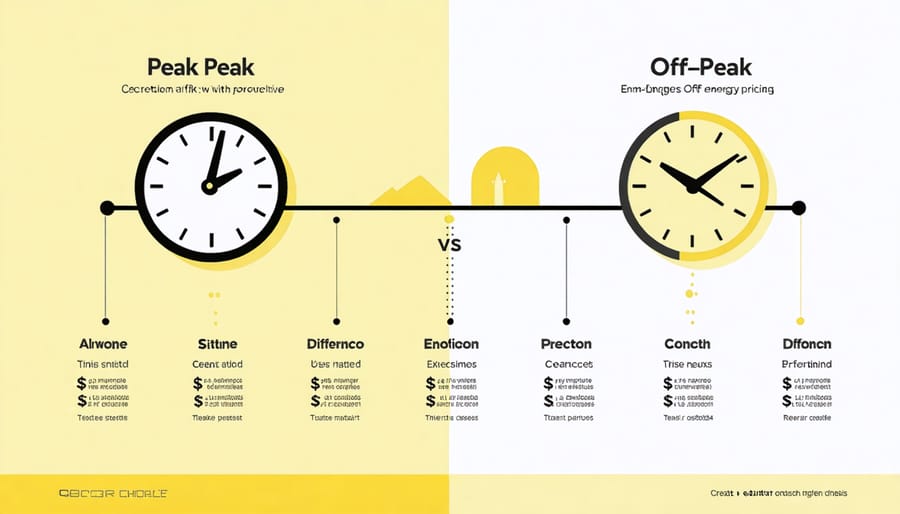Transform your energy consumption patterns by mastering the six fundamental market forces that shift demand in Australia’s evolving energy landscape. As decentralized power grids reshape our energy future, understanding these demand shifters becomes crucial for businesses, households, and energy professionals alike.
From income levels and consumer preferences to technological innovation and government policies, these dynamic factors work in concert to influence when, how, and why energy is consumed. Whether you’re managing a facility, developing energy policy, or seeking to optimize your household’s energy use, recognizing these shifters empowers you to make informed decisions that drive both economic and environmental benefits.
By examining these key demand influences through an Australian lens, we’ll uncover practical strategies to harness their power for more efficient energy management and sustainable outcomes. Let’s explore how these market forces shape our energy landscape and learn to leverage them effectively in our transition toward a more resilient energy future.
Price Sensitivity in Energy Markets
Time-of-Use Pricing
Time-of-Use (TOU) pricing has emerged as a powerful motivator for shifting energy consumption patterns across Australia. This dynamic pricing model charges different rates for electricity depending on the time of day, encouraging consumers to use power when it’s most abundant and affordable.
During peak periods, typically between 2 PM and 8 PM, electricity rates are higher to reflect increased demand on the grid. Conversely, off-peak periods, such as overnight hours, offer significantly lower rates. This pricing structure naturally encourages households and businesses to shift their energy-intensive activities to these cost-effective times.
Many Aussie families have embraced this opportunity by running their dishwashers, washing machines, and other appliances during off-peak hours. Businesses have also adapted by scheduling energy-intensive operations during early morning or late evening hours. The impact has been substantial – some households report savings of up to 20% on their electricity bills while helping to balance grid demand.
Smart meters and energy monitoring apps have made it easier than ever to track these price variations and optimize usage patterns accordingly, turning price-conscious consumers into active participants in grid management.

Peak Demand Pricing
Peak demand pricing, often called Time-of-Use (TOU) rates in Australia, is a powerful tool for shifting energy consumption patterns. During periods of high electricity demand, typically between 2 PM and 8 PM on weekdays, energy providers charge higher rates to encourage consumers to adjust their usage.
This pricing strategy has proven remarkably effective in South Australia, where businesses and households have reduced their peak consumption by up to 30% through simple adjustments. For example, running energy-intensive appliances like washing machines and dishwashers during off-peak hours can lead to significant savings.
Smart meters and energy monitoring apps now make it easier than ever to track and respond to peak pricing periods. Many Australian households are combining these tools with automated systems that shift major appliance operations to cheaper time slots automatically.
Local businesses are also getting on board, with some manufacturing facilities adjusting their production schedules to take advantage of lower off-peak rates. This not only reduces their operating costs but also helps stabilize the grid during high-demand periods, creating a win-win situation for both consumers and energy providers.
Consumer Income and Energy Choices
Household income plays a pivotal role in shaping energy consumption patterns and decision-making across Australian communities. As family budgets expand or contract, we see distinct shifts in how people approach their energy choices, from appliance purchases to daily usage habits.
Higher-income households typically demonstrate greater flexibility in adopting energy-efficient technologies and renewable solutions. These families often invest in solar panels, smart home systems, and premium energy-efficient appliances, viewing the initial cost as a long-term investment. They’re also more likely to participate in demand response programs, as they have the financial buffer to adjust their energy use patterns.
In contrast, lower-income households tend to focus on immediate energy costs rather than long-term savings potential. They might struggle with the upfront costs of energy-efficient appliances, even when aware of the potential savings. This creates what energy experts call the “efficiency gap” – where those who could benefit most from energy savings face the greatest barriers to achieving them.
The impact of income on energy choices extends beyond individual households to entire neighborhoods. In areas with higher average incomes, we often see greater adoption of renewable energy solutions and more significant investments in energy-efficient home improvements. This creates a ripple effect, influencing local energy demand patterns and encouraging broader community participation in sustainable practices.
Understanding these income-related patterns helps energy providers and policymakers develop more effective programs and support mechanisms. For instance, several Australian initiatives now offer low-interest loans and rebates specifically designed to help lower-income households access energy-efficient solutions, helping to bridge the efficiency gap and create more equitable access to sustainable energy choices.
Technology Integration
Smart Home Systems
Smart home automation systems are revolutionising how Australians manage their energy consumption. These intelligent systems work seamlessly with smart grid technology to create efficient, responsive homes that automatically adjust energy usage based on real-time conditions and pricing signals.
Modern smart homes can shift demand by automatically scheduling energy-intensive activities like running dishwashers, charging electric vehicles, or heating water during off-peak periods. Motion sensors ensure lights and appliances operate only when needed, while smart thermostats learn household patterns to optimise heating and cooling cycles.
What makes these systems particularly effective is their ability to respond to external signals without requiring constant user intervention. When electricity demand peaks, smart homes can automatically reduce consumption by dimming lights, adjusting temperature settings, or temporarily pausing non-essential appliances. This automated response helps smooth out demand curves across the grid while keeping residents comfortable and reducing energy bills.
The beauty of these systems lies in their ‘set and forget’ nature – once configured, they continuously work to optimise energy usage while maintaining comfort levels that suit each household’s unique preferences.
Energy Management Apps
In today’s digital age, smartphone apps and smart home systems have become powerful tools for managing energy consumption. These innovative applications give consumers unprecedented control over their energy usage, making it easier than ever to shift demand and reduce costs. Leading Australian energy providers have developed user-friendly apps that provide real-time consumption data, peak pricing alerts, and automated control features.
Popular apps like AGL’s Energy App and Origin’s Energy Manager allow users to track their usage patterns, receive notifications about grid demand, and make informed decisions about when to use high-consumption appliances. These apps often integrate with energy storage solutions and smart meters, creating a comprehensive energy management ecosystem.
Many of these applications also gamify energy-saving behaviors, offering rewards and community challenges that encourage users to shift their consumption to off-peak hours. Features like automated scheduling for electric vehicle charging, pool pump operation, and air conditioning systems help households effortlessly optimize their energy use while maintaining comfort and convenience. The rise of these digital tools has empowered consumers to become active participants in demand management, contributing to a more sustainable and efficient energy grid.

Weather and Seasonal Factors
Weather and seasonal patterns play a pivotal role in shaping energy demand across Australia’s diverse climate zones. During the scorching summer months, when temperatures soar in cities like Sydney and Brisbane, air conditioning usage spikes dramatically, creating significant peaks in electricity consumption. Conversely, winter brings increased heating demands, particularly in southern regions like Melbourne and Tasmania.
Seasonal variations don’t just affect temperature-related energy use. Longer daylight hours in summer naturally reduce lighting requirements, while shorter winter days lead to higher artificial lighting demands. This natural cycle creates predictable patterns that energy providers and consumers can anticipate and plan for.
Extreme weather events, which are becoming more frequent due to climate change, can trigger sudden demand surges. Heatwaves, for instance, can push cooling systems to their limits, while cold snaps might lead to heating system overuse. These weather-driven demand spikes often coincide with reduced renewable energy generation, particularly during overcast or stormy conditions.
The impact of weather on energy demand isn’t limited to residential settings. Commercial buildings, industrial facilities, and agricultural operations all experience weather-dependent consumption patterns. For example, irrigation systems work harder during dry spells, while manufacturing processes might require additional cooling during hot periods.
Understanding these weather-related patterns helps energy providers better manage grid resources and enables consumers to make informed decisions about their energy use. Smart technology and weather forecasting now allow for more precise prediction of these demand shifts, supporting better energy management strategies and more efficient resource allocation across the network.

Consumer Preferences and Values
Consumer preferences and values have emerged as powerful forces reshaping energy consumption patterns across Australia. As environmental consciousness grows, households and businesses increasingly prioritise sustainable choices in their energy decisions. This shift reflects a deeper understanding of climate change impacts and a collective desire to reduce carbon footprints.
Recent surveys show that 82% of Australian consumers consider environmental impact when making energy-related decisions. This heightened awareness manifests in various ways, from choosing energy-efficient appliances to supporting renewable energy providers. Many households are willing to pay a premium for green energy options, demonstrating how values can override purely economic considerations.
The rise of the “conscious consumer” movement has particularly influenced energy consumption behaviours. Communities are forming energy cooperatives, sharing resources, and advocating for cleaner energy solutions. This social trend has created pressure on energy providers to offer more sustainable options and transparent environmental reporting.
Corporate values are also evolving, with businesses increasingly incorporating environmental stewardship into their brand identity. Companies are responding to consumer demands by adopting sustainable practices and showcasing their commitment to renewable energy. This shift isn’t merely about compliance; it’s about meeting the expectations of environmentally conscious customers and stakeholders.
The influence of environmental values extends to peak demand periods, where consumers actively participate in demand response programs. Many Australians now voluntarily adjust their energy use during high-demand times, showing how environmental consciousness can drive behavioural change. This collective effort demonstrates the growing alignment between personal values and energy consumption choices, creating a powerful demand shifter in the energy market.
Government Policies and Incentives
Government policies and incentives play a pivotal role in shaping energy consumption patterns across Australia. The introduction of carbon pricing mechanisms, renewable energy targets, and efficiency standards has significantly influenced how businesses and households manage their energy use. For instance, the Small-scale Renewable Energy Scheme (SRES) has encouraged thousands of Australians to install solar panels, effectively shifting demand away from grid electricity during peak daylight hours.
State-level feed-in tariffs have created a strong incentive for consumers to become prosumers, generating their own power and feeding excess energy back into the grid. This has led to the rapid development of renewable energy infrastructure and transformed traditional demand patterns.
Energy-efficient appliance rebates and building standards have also reshaped consumption behaviors. The Victorian Energy Upgrades program, for example, provides households with discounts on energy-efficient products, leading to permanent reductions in baseline energy demand. Similarly, the Commercial Building Disclosure (CBD) Program has encouraged businesses to improve their energy performance, resulting in more responsive and flexible commercial energy use.
Time-of-use tariffs, implemented through smart meter rollouts, have proven particularly effective in shifting demand to off-peak periods. These pricing structures, combined with demand response programs, create financial incentives for consumers to adjust their usage patterns. The success of these initiatives demonstrates how well-designed policies can drive sustainable changes in energy consumption while supporting grid stability and reducing peak demand pressures.
Understanding and effectively managing demand shifters is crucial for creating a more sustainable and resilient energy future in Australia. By recognizing how these six key factors influence energy consumption patterns, businesses, households, and policymakers can make informed decisions that benefit both the environment and the bottom line.
The successful implementation of demand shifting strategies has already shown promising results across the country, from large industrial facilities reducing peak demand charges to households optimizing their solar energy consumption. These examples demonstrate that when we actively respond to demand shifters, we create opportunities for significant energy savings and environmental benefits.
Looking ahead, the ability to leverage these demand shifters will become increasingly important as Australia continues its transition to renewable energy. By incorporating this knowledge into energy management strategies, organizations can better predict and adapt to changing consumption patterns, ultimately contributing to a more sustainable energy landscape.
The future of energy management lies in our collective ability to understand, anticipate, and respond to these demand shifters. Through continued education, technological innovation, and community engagement, we can build a more efficient and environmentally conscious energy system that serves as a model for sustainable development worldwide.

